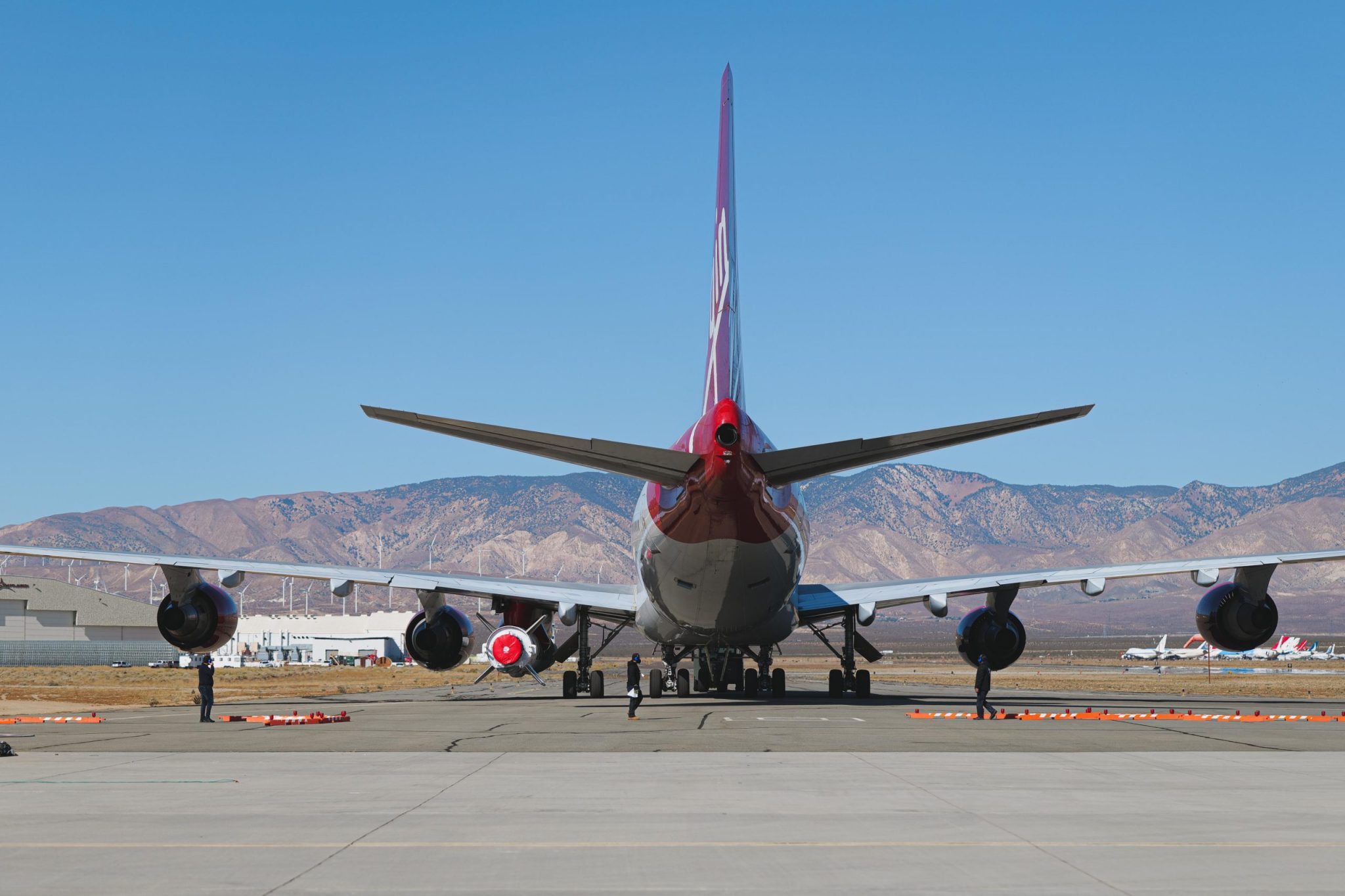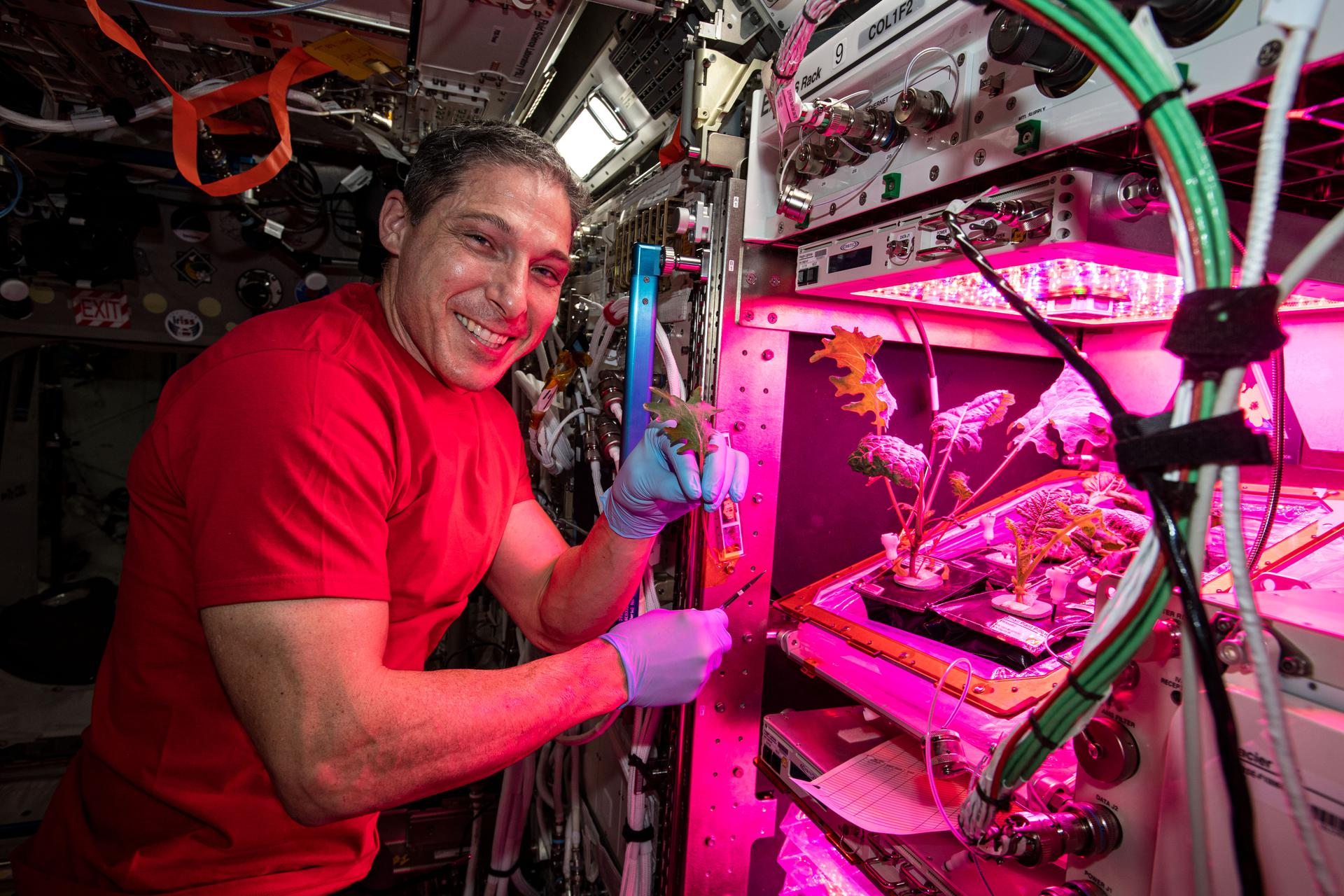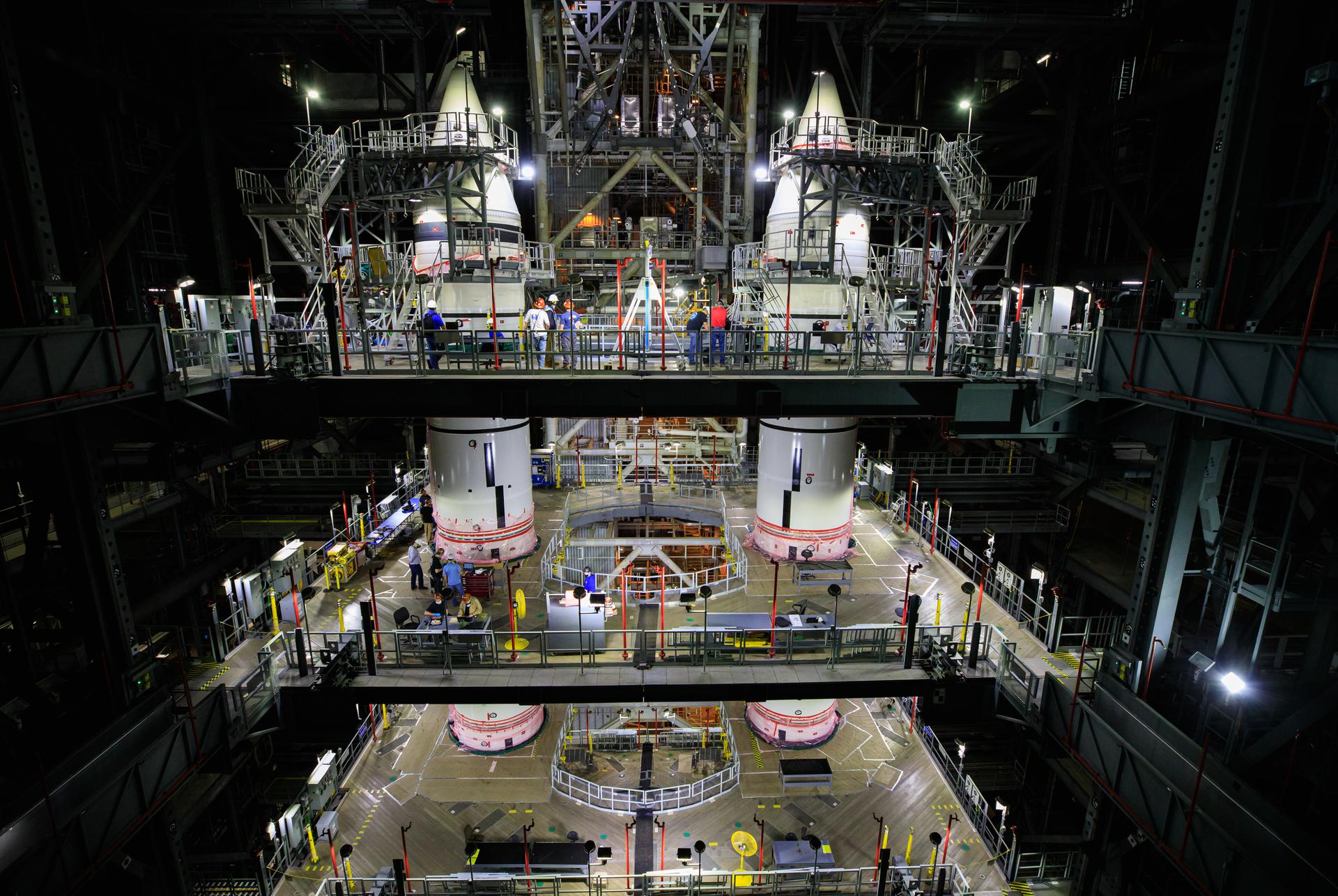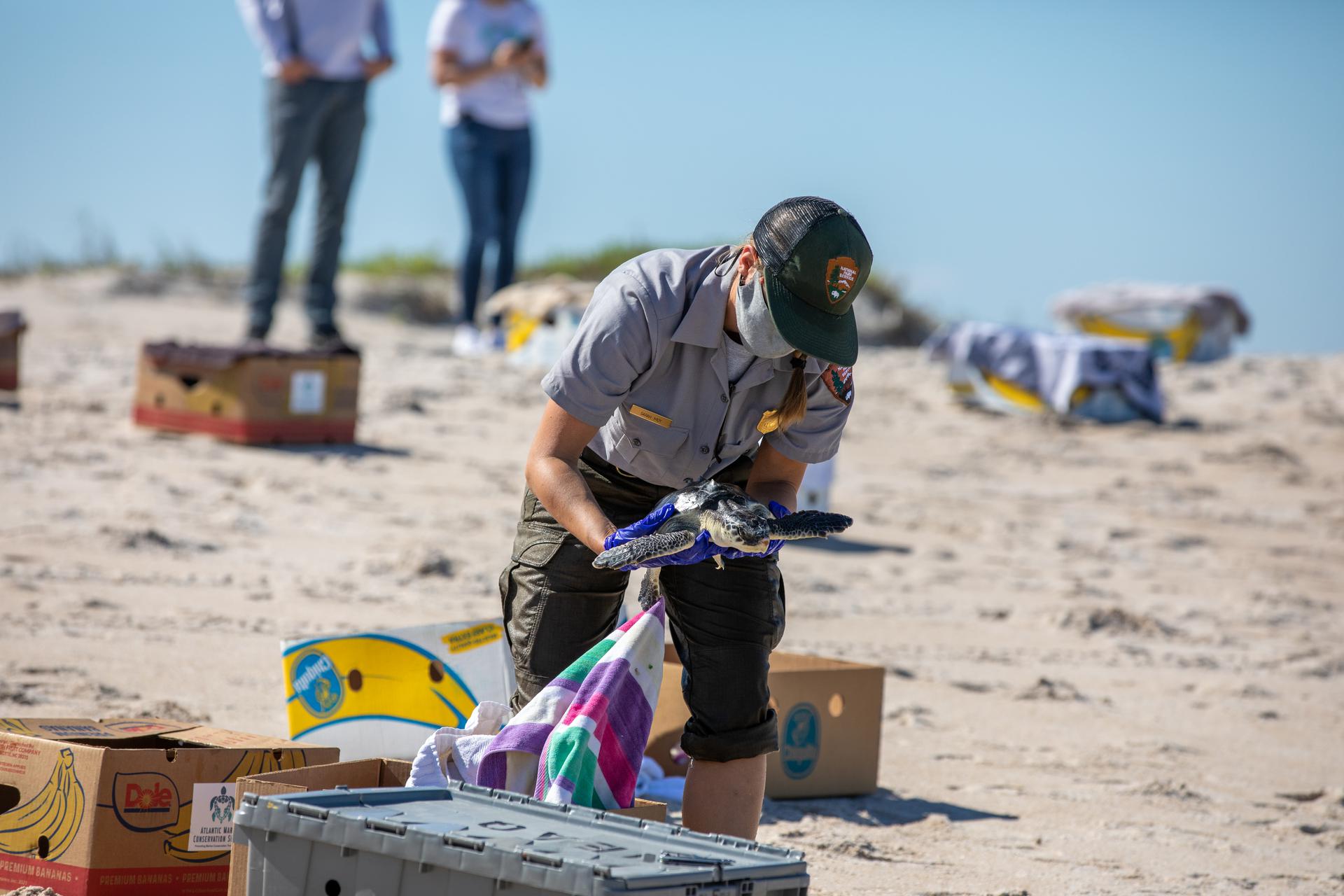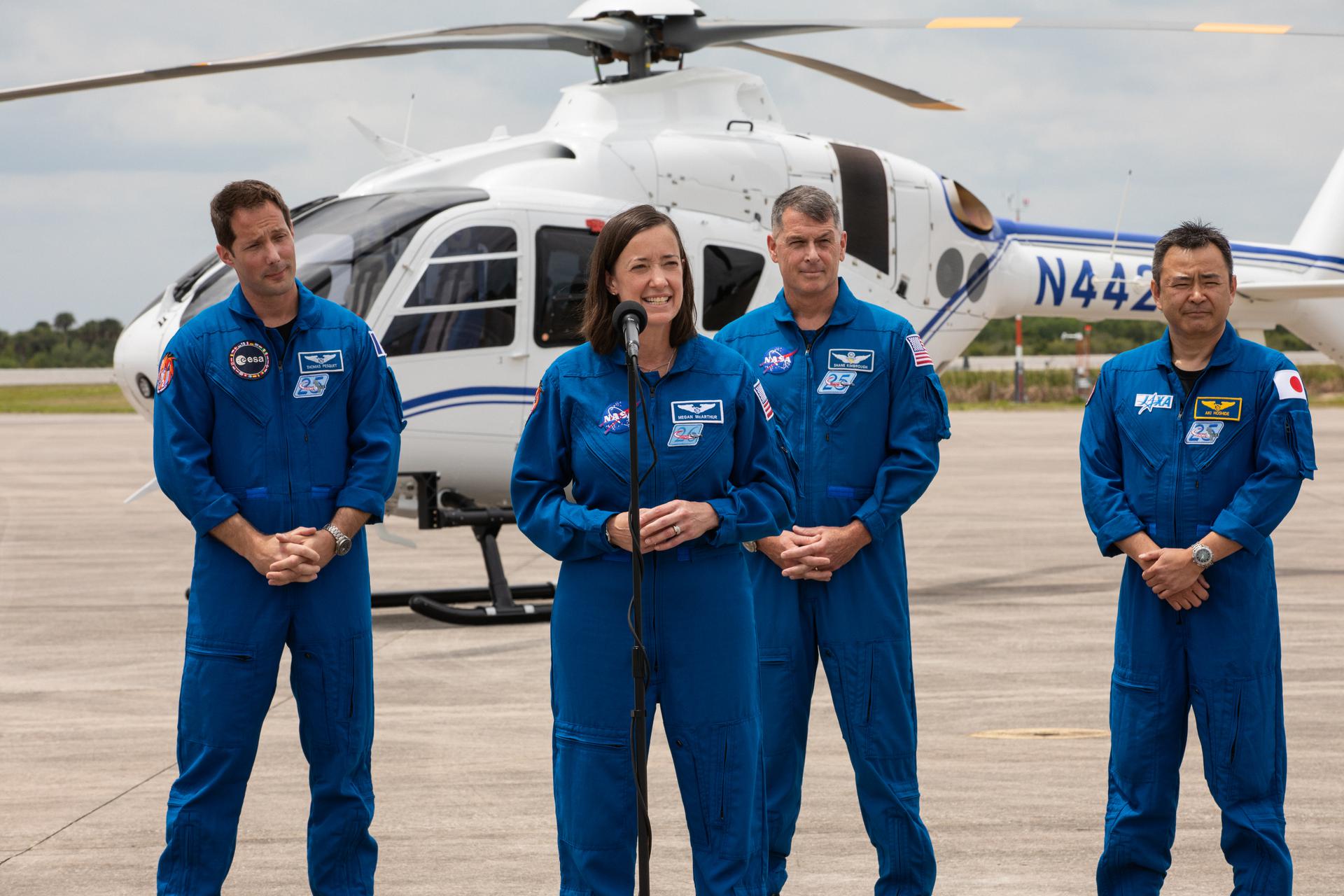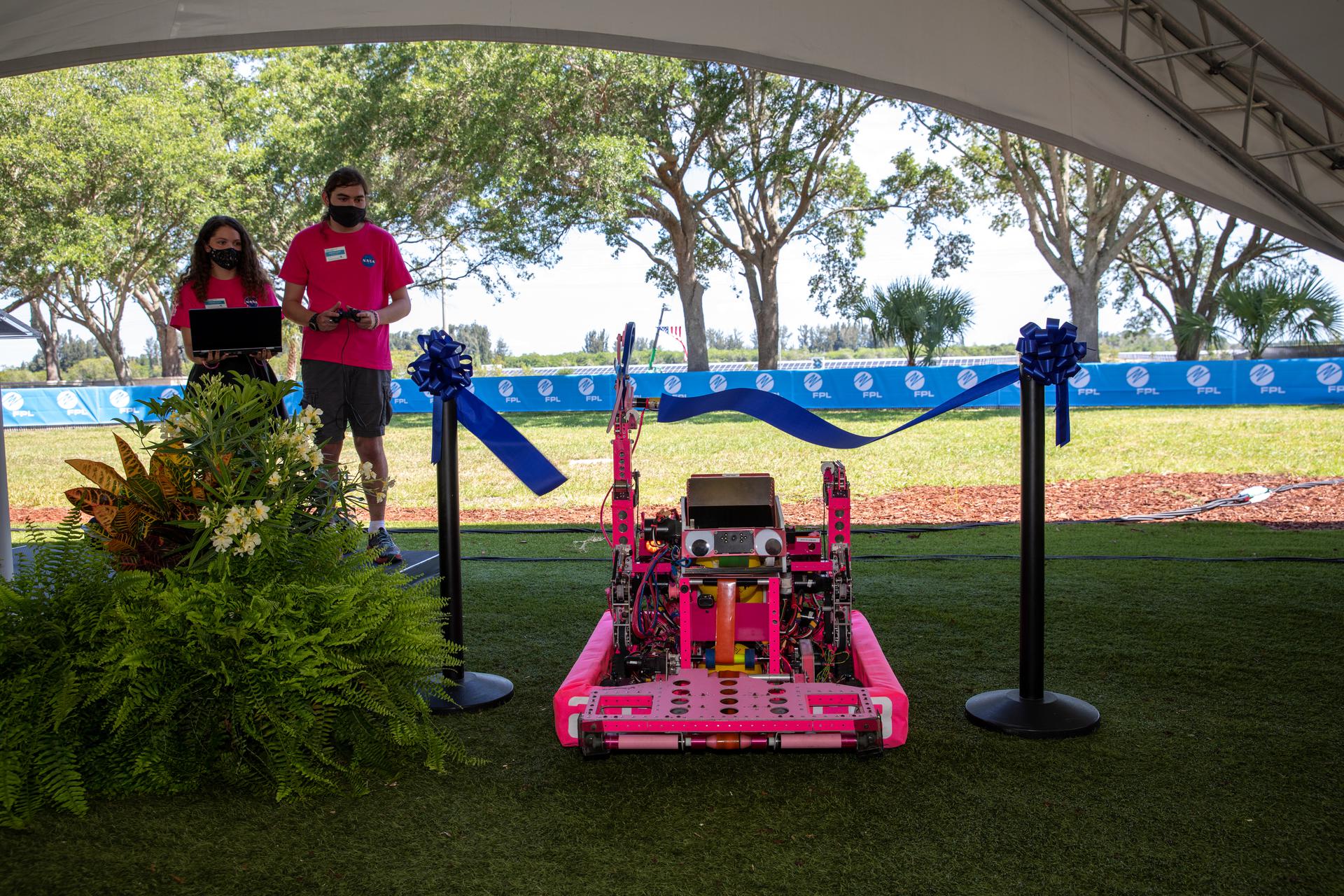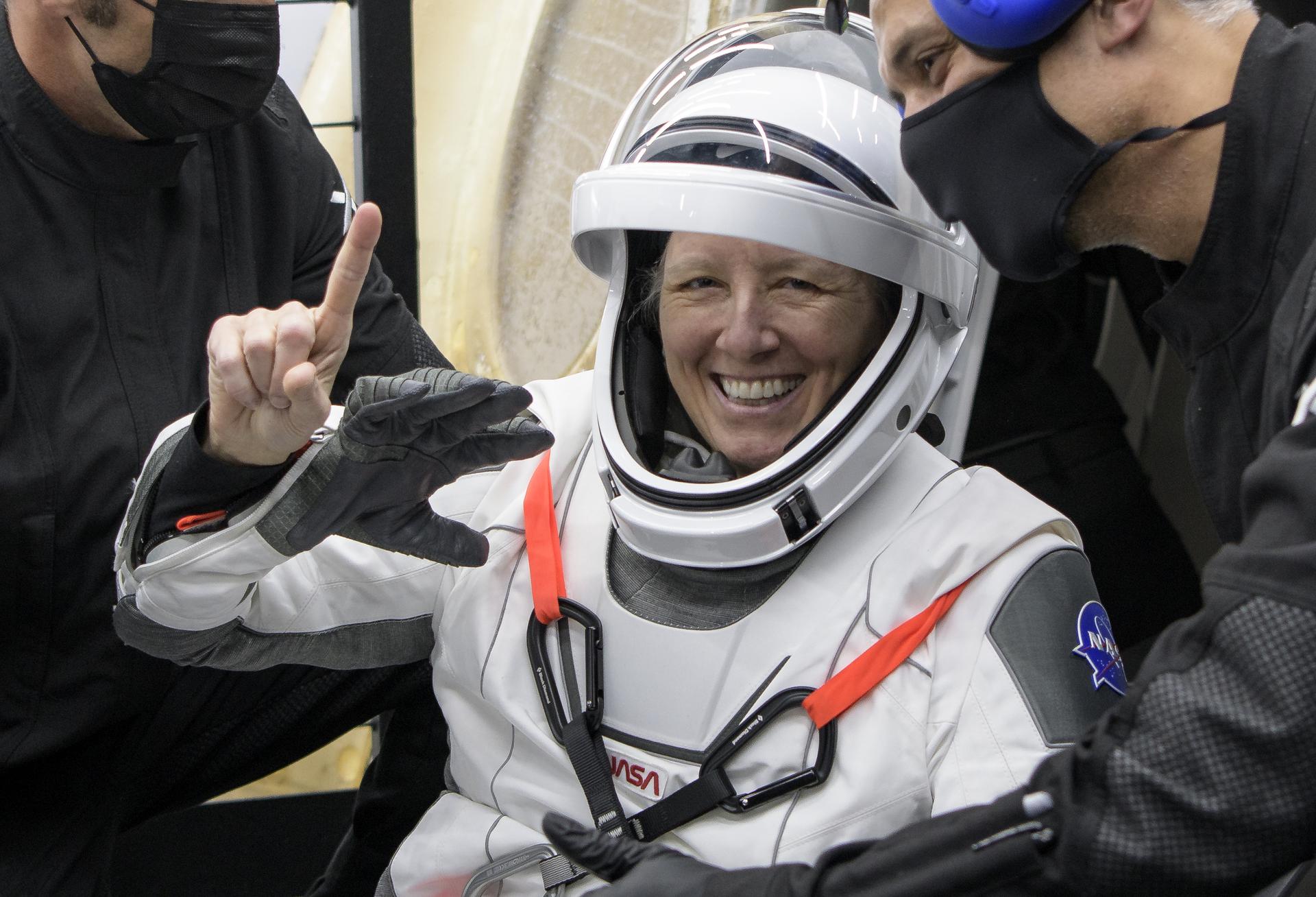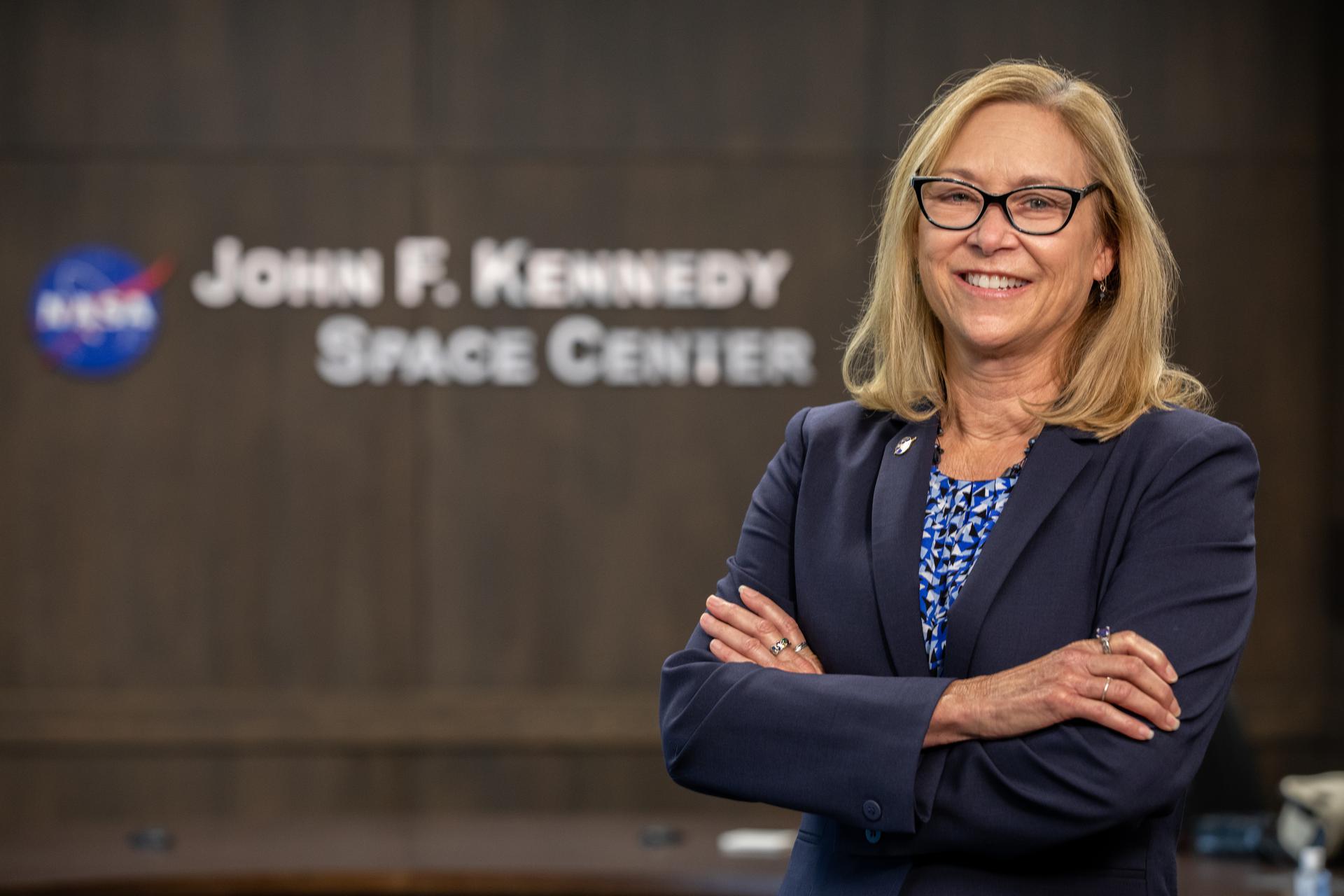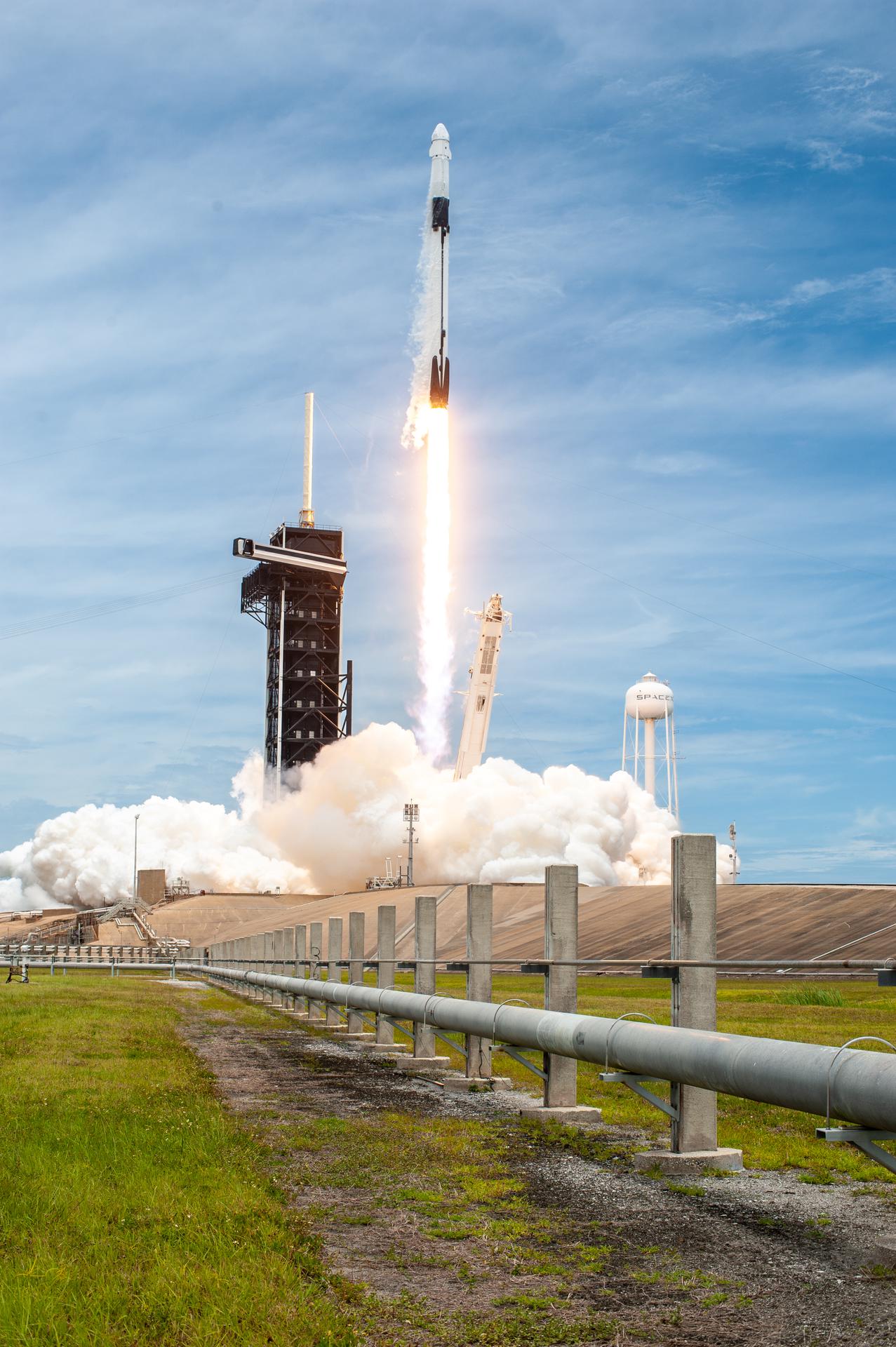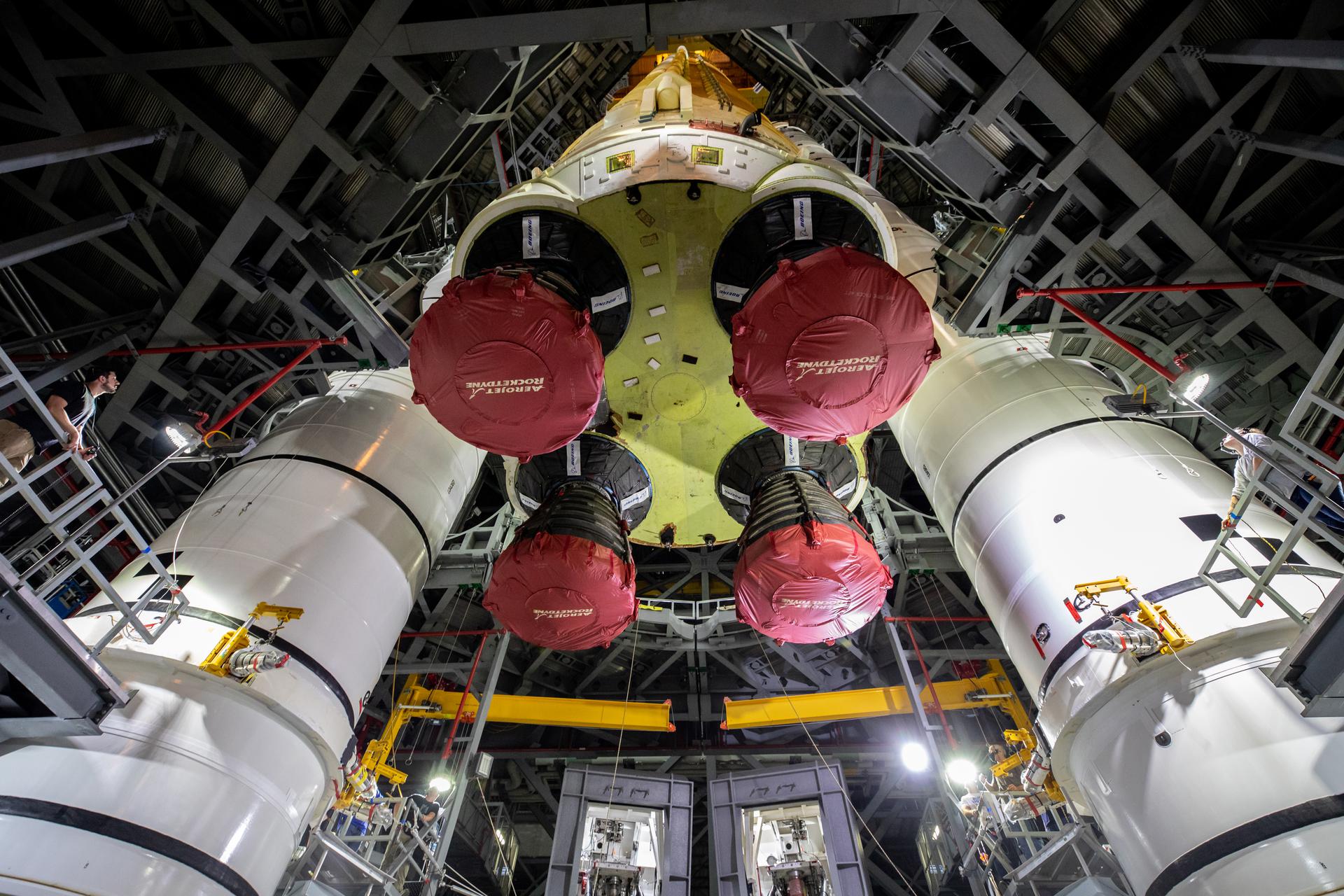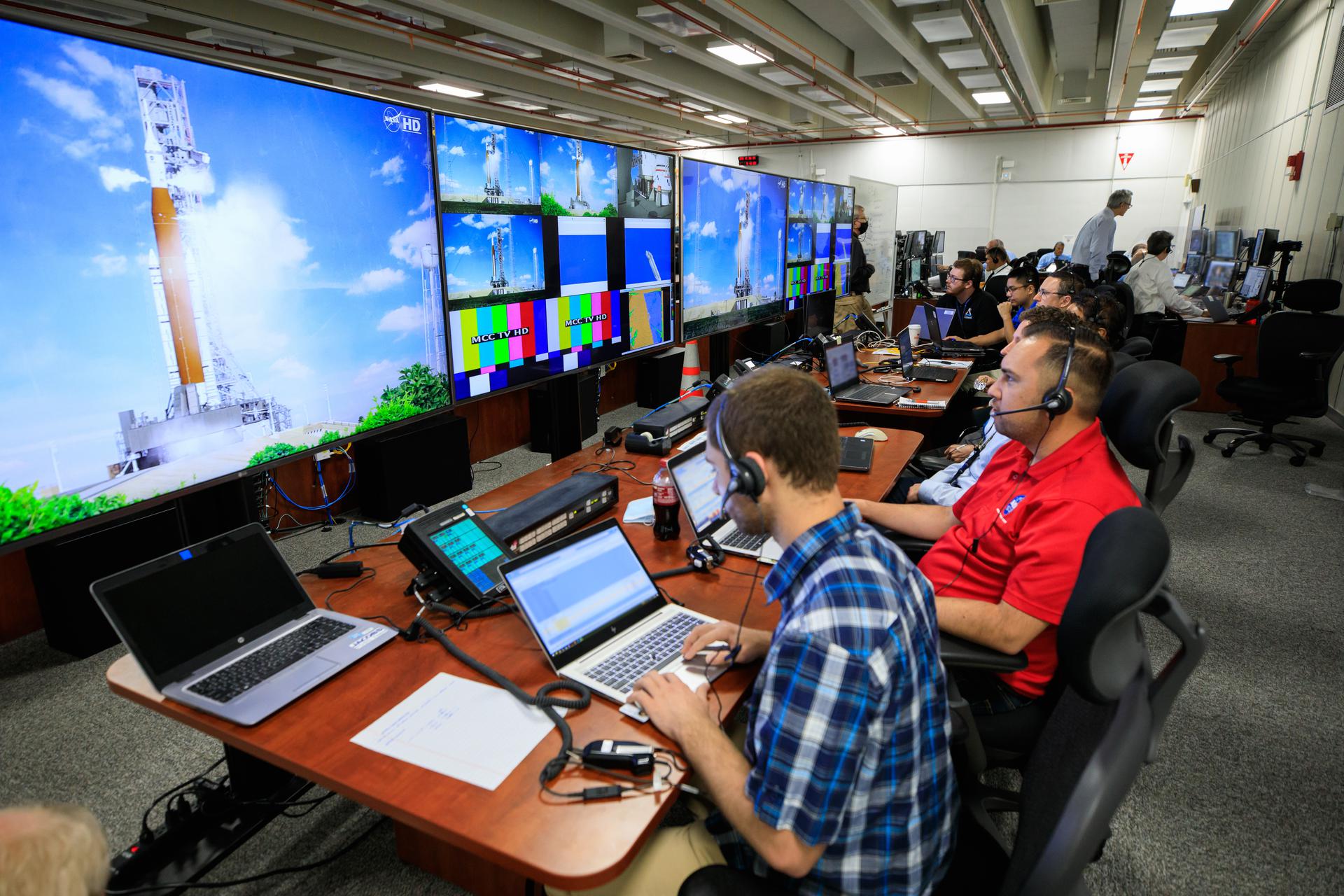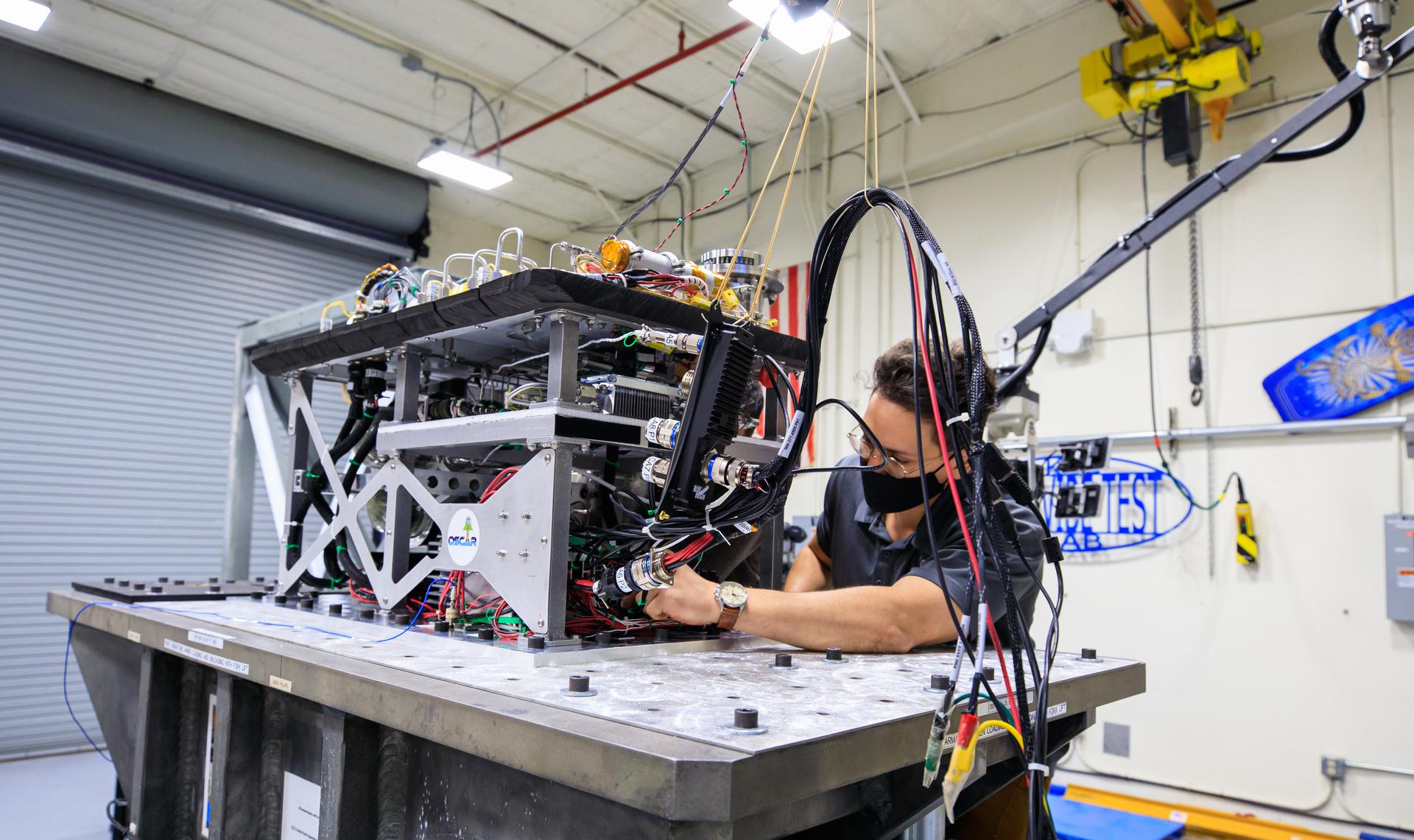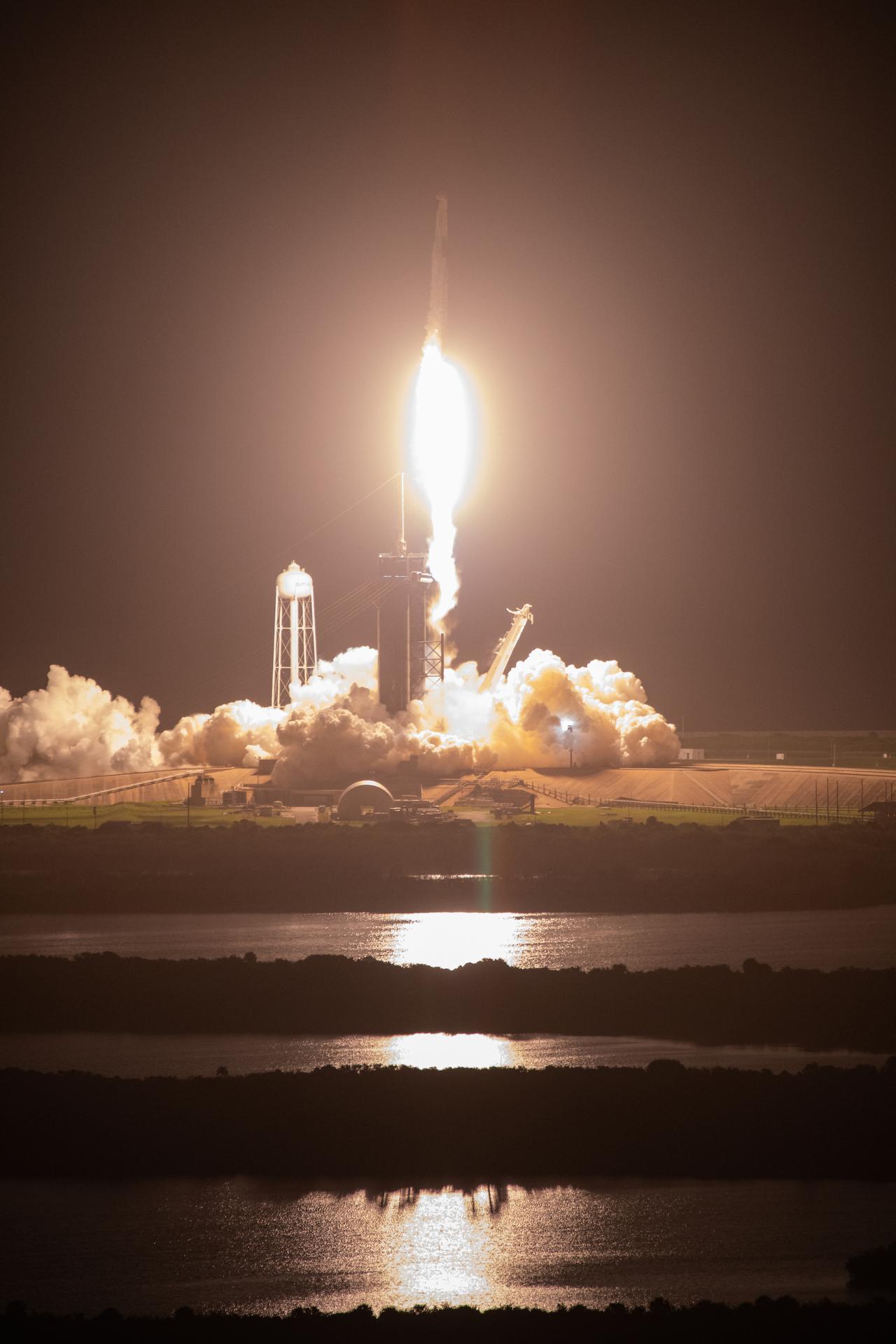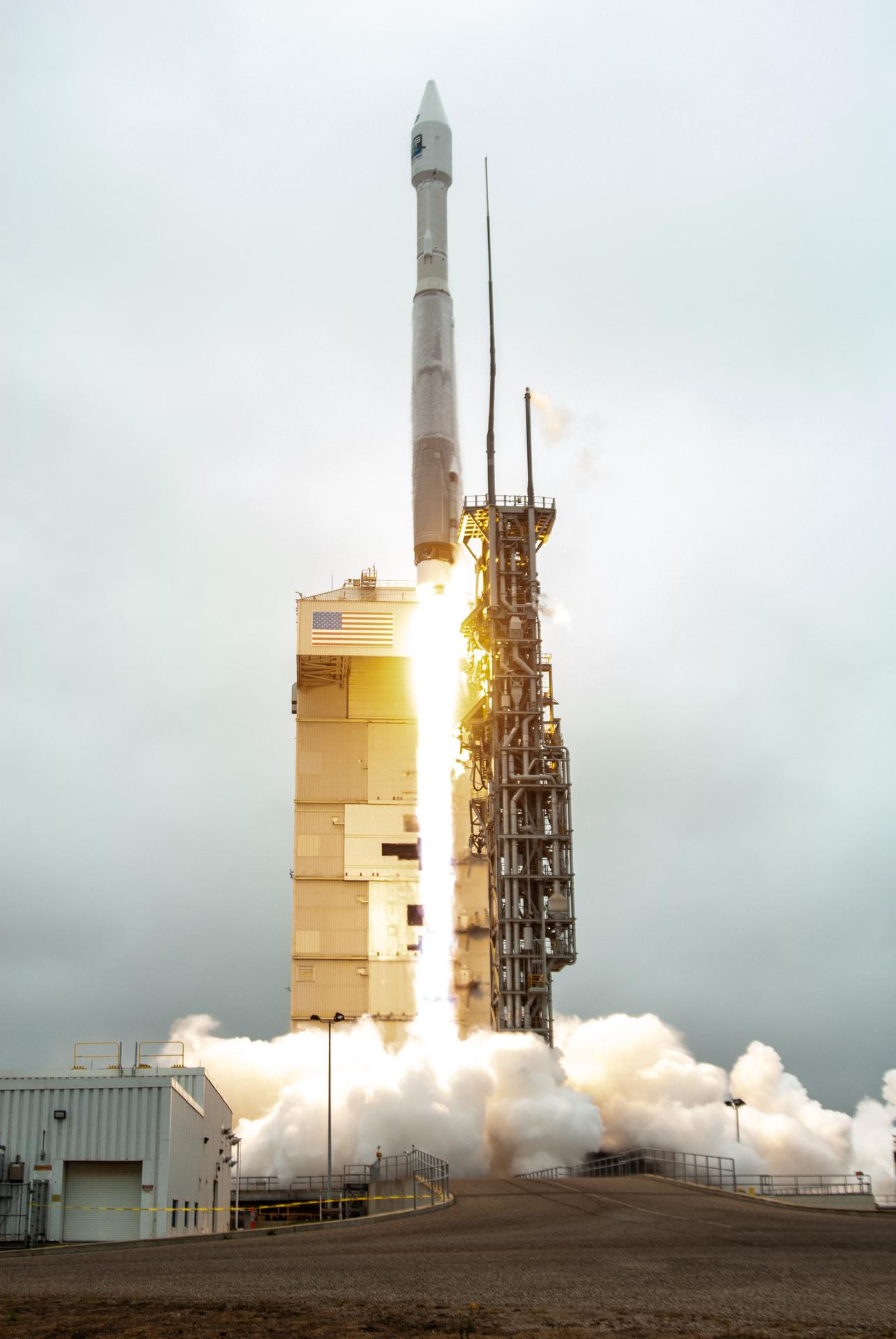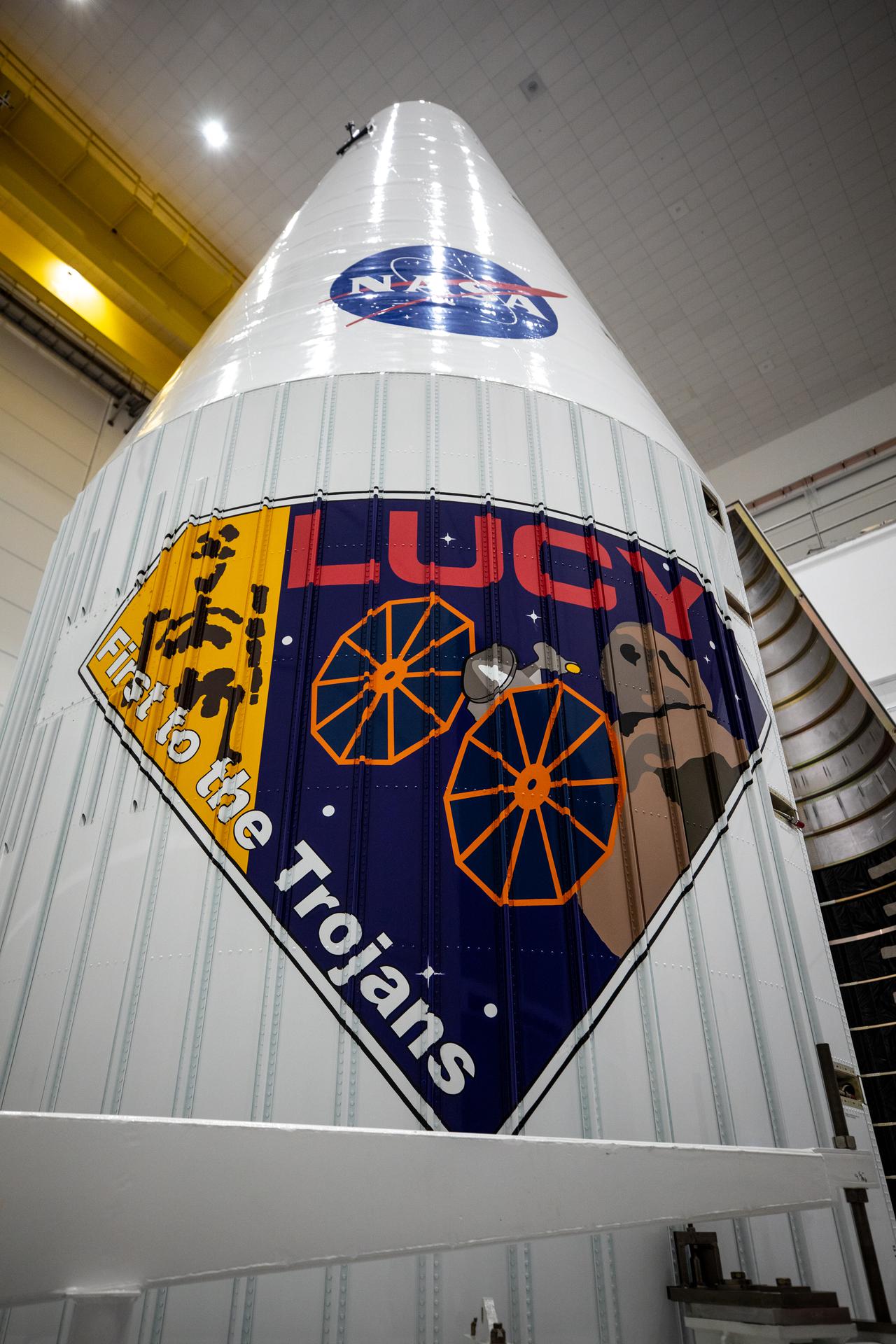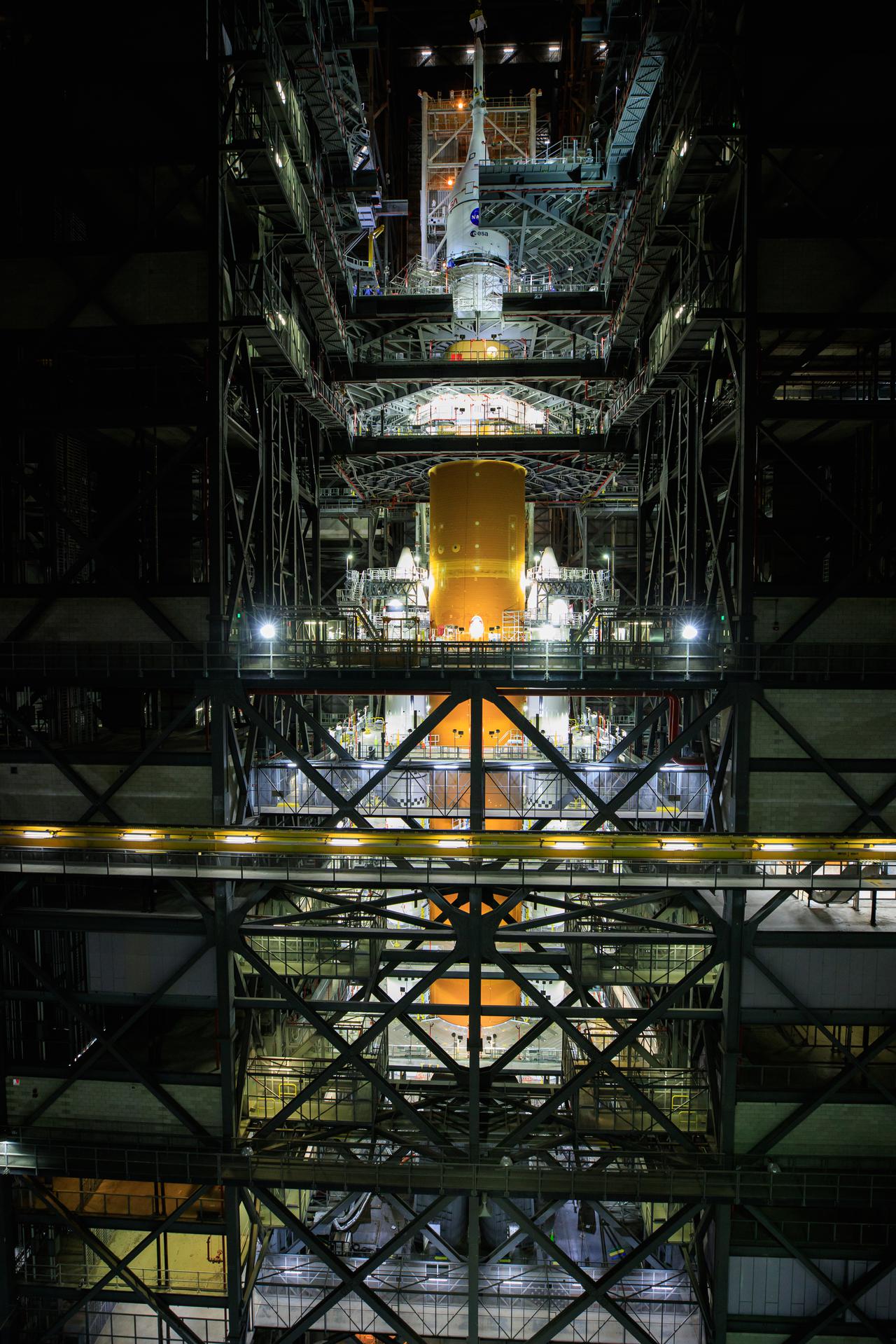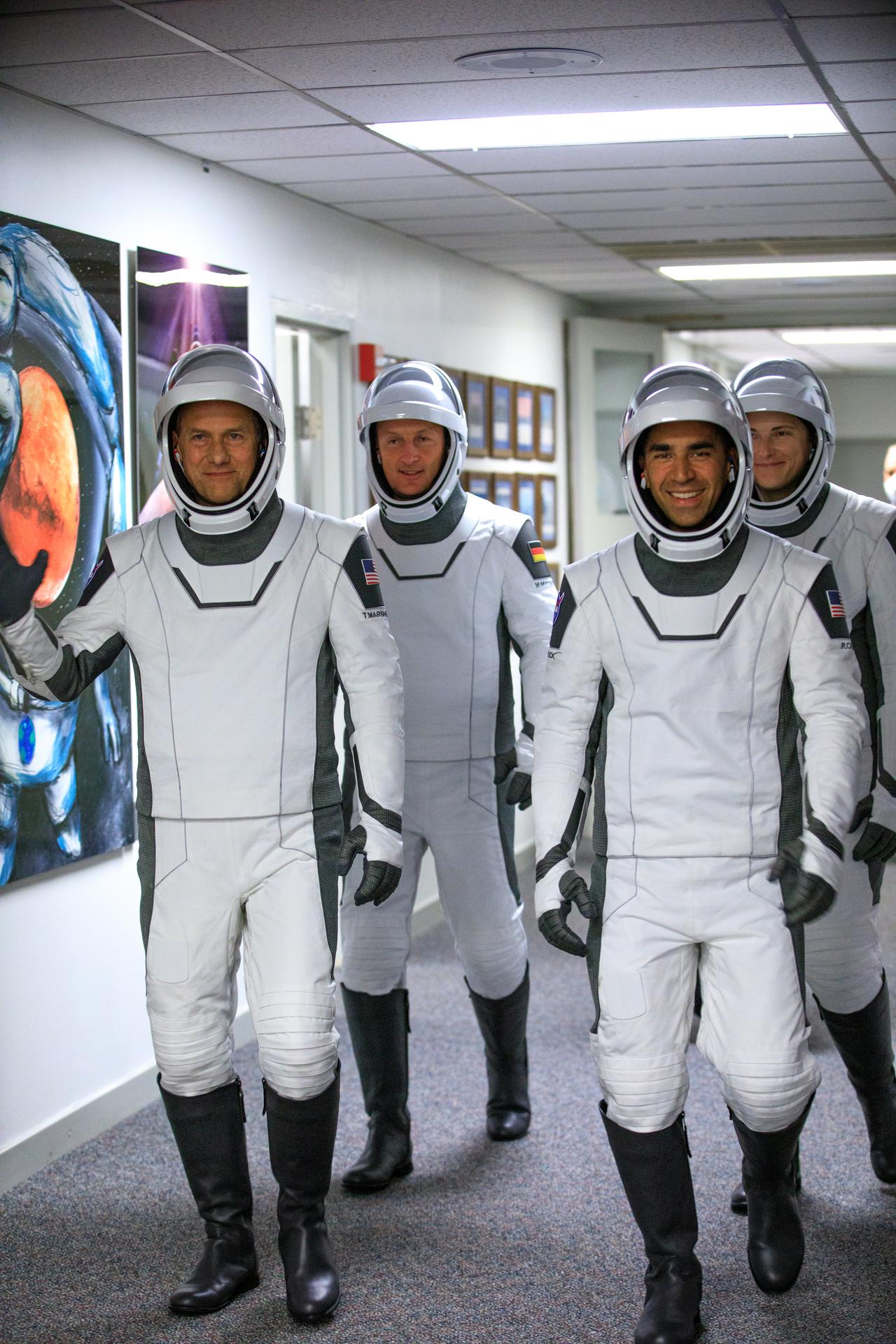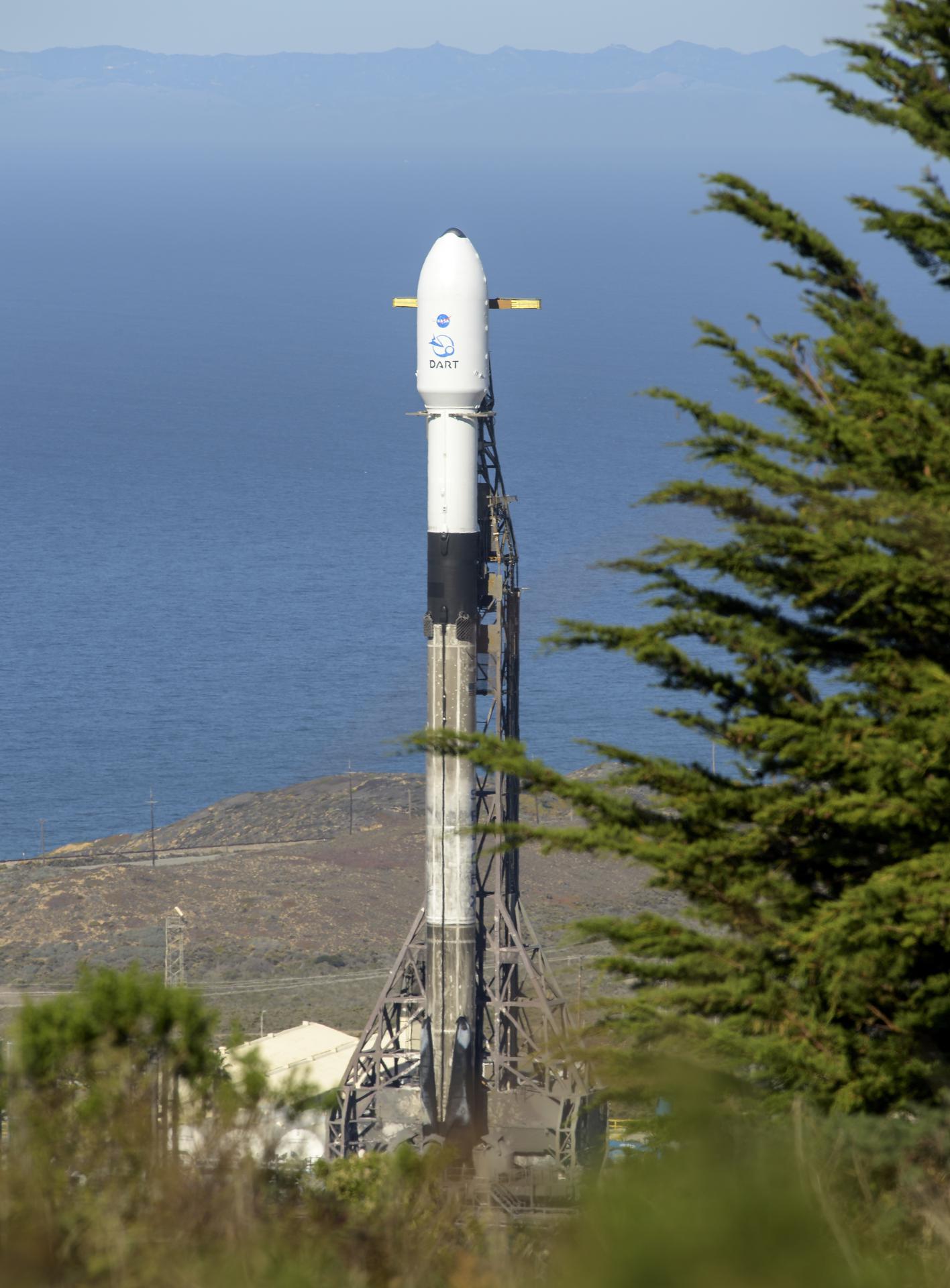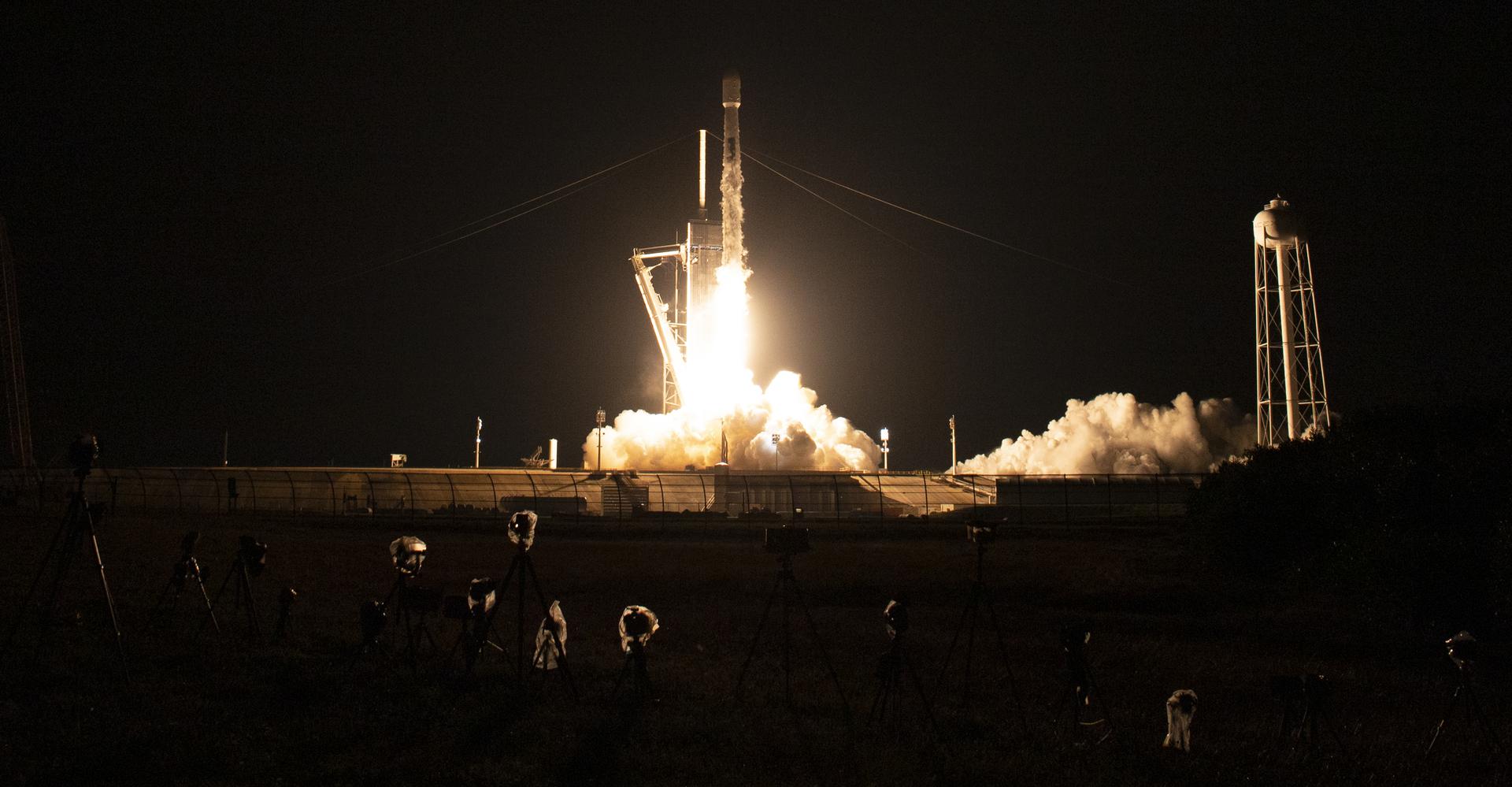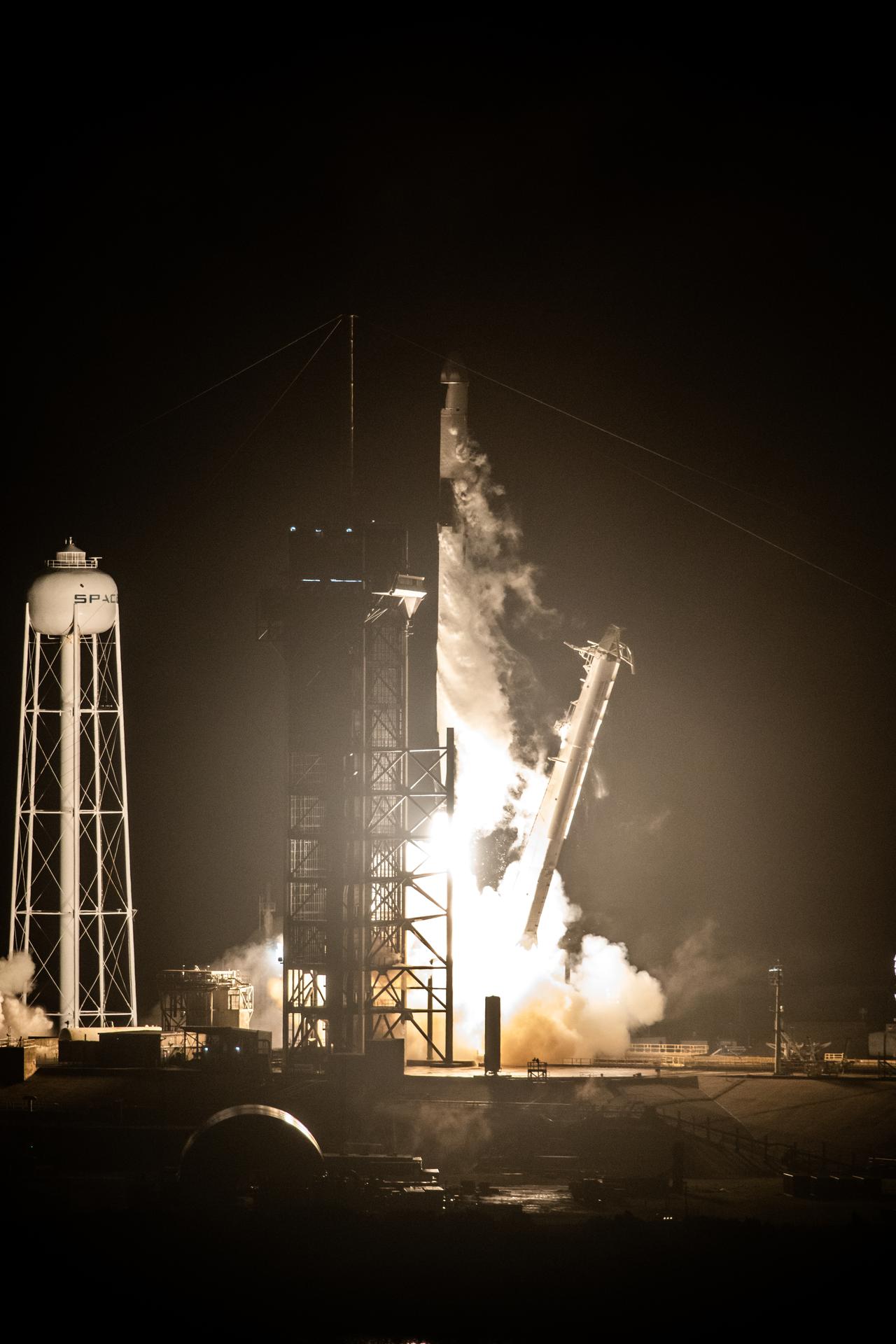JANUARY
ELaNa 20 Launch
Marking the first payload carried by the LauncherOne rocket, Virgin Orbit’s 747-00 carrier, Cosmic Girl, took off from the Mojave Air and Space Port in California on Jan. 17. The LauncherOne rocket, attached to the underside of Cosmic Girl’s left wing, carried CubeSats for NASA’s encapsulated Educational Launch of Nanosatellites (ELaNa) 20 mission.
First Transplant in Space
An early challenge turned into a surprise success on the International Space Station that could be a boon for the future of space crop production. NASA astronaut Mike Hopkins noticed some plants failing to thrive aboard the station, so he executed the first plant transplant within the agency’s Vegetable Production System (Veggie).
MARCH
SRB Stacking Complete
Stacking was completed for the twin Space Launch System solid rocket boosters for NASA’s Artemis I mission. Over several weeks, workers used one of five massive cranes to place 10 booster segments and nose assemblies on the mobile launcher inside the Vehicle Assembly Building at Kennedy Space Center.
Sea Turtles Rescued
A total of 36 juvenile Kemp’s ridley sea turtles, along with one Loggerhead/Kemp’s ridley hybrid turtle, were transported to Kennedy aboard a PC12 aircraft from rehabilitation facilities in Massachusetts and New York. The turtles were carefully offloaded, packed into vehicles, driven to nearby Canaveral National Seashore, and released into the Atlantic Ocean.
APRIL
SpaceX Crew-2 Launch
A Falcon 9 rocket and the Crew Dragon spacecraft Endeavour lifted off in the early morning on April 23 from Launch Complex 39A at Kennedy Space Center carrying NASA astronauts Shane Kimbrough and Megan McArthur, Japan Aerospace Exploration Agency (JAXA) astronaut Akihido Hoshide, and European Space Agency (ESA) astronaut Thomas Pesquet. The crew began their 23.5-hour journey to the International Space Station on NASA’s SpaceX Crew-2 mission.
Discovery Solar Energy Center
Florida Power and Light’s new Discovery Solar Energy Center – named after the space shuttle – officially opened with a robot ribbon cutting. The 74.5-megawatt solar site spans 491 acres at Kennedy Space Center and features about 250,000 solar panels, capable of powering about 15,000 homes per year.
MAY
SpaceX Crew-1 Splashdown
Astronauts Michael Hopkins, Victor Glover, and Shannon Walker of NASA, and Soichi Noguchi of the Japan Aerospace Exploration Agency (JAXA) splashed down safely in the SpaceX Crew Dragon Resilience in the Gulf of Mexico off the coast of Panama City, Florida, on May 2, after 168 days in space. The return marked the end of the first crew rotation mission to the International Space Station of the Crew Dragon spacecraft, developed in partnership between NASA and SpaceX as a part of the agency’s Commercial Crew Program.
JUNE
Kennedy Leadership Changes
On June 30, NASA Administrator Bill Nelson named Janet Petro director of Kennedy Space Center. Kelvin Manning, who had previously served as Kennedy’s technical associate director, was selected as the spaceport’s deputy director. In May, Robert D. Cabana, who served as Kennedy director since 2008, was named the agency’s associate administrator.
SpaceX CRS-22 Launch
More than 7,300 pounds of science and research, crew supplies, and vehicle hardware headed to the International Space Station following the picture-perfect launch of SpaceX’s 22nd resupply services mission on June 3.
Core Stage Stacking
The core stage of the Space Launch System rocket for NASA’s Artemis I mission was placed on the mobile launcher in between the twin solid rocket boosters inside the Vehicle Assembly Building at Kennedy Space Center. Serving as the backbone of the rocket, the core stage supports the weight of the payload, upper stage, and crew vehicle, as well as carrying the thrust of its four engines and two five-segment solid rocket boosters.
JULY
Artemis I Simulations
On July 8, engineers and test directors from Kennedy Space Center in Florida, Johnson Space Center in Houston, and Marshall Space Flight Center in Alabama came together to perform the first joint launch countdown simulation for Artemis I. The mission will mark the inaugural flight of the Space Launch System rocket and Orion spacecraft as an integrated system, setting the stage for crewed flights to the Moon.
AUGUST
OSCAR Flight
The Orbital Syngas Commodity Augmentation Reactor (OSCAR) completed a successful Aug. 26 test flight aboard Blue Origin’s 17th New Shepard mission. Data from the flight provided researchers at Kennedy with new information about OSCAR, which tests technology to convert trash and human waste generated during spaceflight into useful gases such as carbon dioxide, carbon monoxide, water vapor, and methane.
SpaceX CRS-23 Launch
On Aug. 29, a SpaceX Falcon 9 rocket powered off the launch pad from Kennedy Space Center’s Launch Complex 39A in Florida, carrying the Dragon spacecraft on the company’s 23rd commercial resupply services mission.
SEPTEMBER
Landsat 9 Liftoff
A United Launch Alliance Atlas V rocket, carrying NASA’s Landsat 9 satellite, lifted off from Space Launch Complex-3 at Vandenberg Space Force Base in California on Sept. 27. Landsat 9 joined its sister satellite – Landsat 8 – in orbit, where it will collect images from across the Earth to monitor the health of our home planet.
OCTOBER
Lucy Launch
A United Launch Alliance Atlas V rocket blasted off from Space Launch Complex 41 at Cape Canaveral Space Force Station in Florida on Oct. 16 at 5:34 a.m. EDT, carrying NASA’s Lucy spacecraft. The Lucy mission will explore the Trojan asteroids.
SLS Stacking Complete
Engineers and technicians successfully secured NASA’s Orion spacecraft atop the fully assembled Space Launch System, completing stacking of the agency’s mega-Moon rocket that will launch the next generation of deep space operations, including Artemis missions on and around the Moon.
NOVEMBER
Crew-3 Mission
NASA astronauts Raja Chari, Tom Marshburn, and Kayla Barron, along with ESA (European Space Agency) astronaut Matthias Maurer soared into the night sky aboard a SpaceX Crew Dragon spacecraft and Falcon 9 rocket. They lifted off from Kennedy’s Launch Complex 39A on NASA’s SpaceX Crew-3 mission to the International Space Station.
DART Embarks on Voyage
A SpaceX Falcon 9 rocket carrying NASA’s Double Asteroid Redirection Test (DART) spacecraft launched from Space Launch Complex 4 at Vandenberg Space Force Base in California at 1:21 a.m. EST on Nov. 24. DART headed on its voyage to rendezvous with an asteroid.
DECEMBER
IXPE Liftoff
NASA’s Imaging X-Ray Polarimetry Explorer (IXPE) spacecraft, the agency’s first dedicated mission to measuring X-ray polarization, lit up the early morning Florida sky on its liftoff from Kennedy Space Center’s Launch Complex 39A at 1 a.m. EST on Dec. 9.
Year’s Final Resupply Services Mission
SpaceX’s 24th and final commercial resupply services mission of 2021 lifted off Dec. 21 at 5:07 a.m. EST from Kennedy Space Center’s Launch Complex 39A. Launching aboard a SpaceX Falcon 9 rocket, the company’s Dragon spacecraft delivered more than 6,500 pounds of science and research experiments, crew supplies, and vehicle hardware to the orbiting laboratory.





























